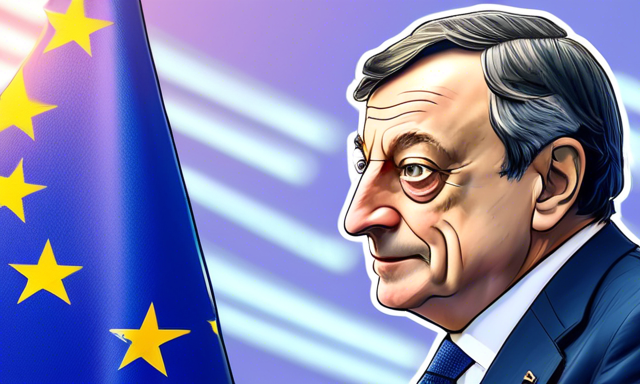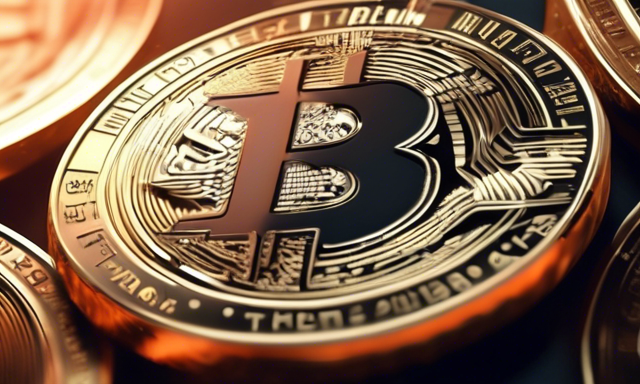EU’s Investment Needs: A Roadmap for Competitiveness and Sustainability 🌍💶
The European Union stands at a crucial junction, requiring an influx of up to 800 billion euros (around $884 billion) annually to achieve its essential objectives regarding competitiveness and climate change. A report delivered by notable economist and politician Mario Draghi emphasizes the pressing investment requirement and outlines the challenges the EU faces in this endeavor.
Challenges Facing the EU’s Ambitions 🚧
The EU aims to enhance its geopolitical stature, promote social equity, and achieve decarbonization. However, these aspirations are jeopardized by sluggish economic performance and lesser productivity levels compared to the United States and China. The comprehensive analysis led by Draghi, a former Prime Minister of Italy and former President of the European Central Bank, indicates that the EU must concentrate on several key priorities:
- Reducing energy costs
- Enhancing competitiveness
- Coordinating industrial strategies
- Strengthening defense funding
Adapting to Global Dependencies 🌎🔗
The EU must navigate a reality where dependencies have transformed into vulnerabilities. The report illustrates the bloc’s reliance on China for crucial minerals and underlines China’s dependency on the EU for absorbing its industrial excesses. As the global economic landscape evolves, it is vital for the EU to redefine its strategies.
Moreover, with approximately 40% of Europe’s imports originating from a limited number of suppliers, the EU risks exposure if there is a shift towards supply chain resilience. Notably, nearly half of these imports come from countries currently not aligned with the EU’s strategic interests.
Establishing an Effective Foreign Economic Policy 🌐
To counteract these vulnerabilities, the report advocates for the development of an authentic “foreign economic policy.” Key recommendations include:
- Formulating preferential trade agreements with resource-rich nations
- Establishing stockpiles in critical sectors
- Creating industrial alliances to secure the supply chain for essential technologies
It is critical for the EU to ensure that its dependencies do not amplify and to seek ways to utilize domestic resources through various methods such as mining, recycling, and exploring innovative alternative materials.
Focusing on Single Market Goals 🔄📈
Another goal is the full realization of the single market, encompassing approximately 440 million consumers and 23 million companies by minimizing trade barriers. The EU must also ensure that its competition policies do not hinder its objectives, especially within the technology sector.
Facilitating Massive Investments 📊💰
To address the significant investment requirements unseen in Europe for the last fifty years, a blend of private funding and public assistance is necessary. The report identifies an “innovation deficit” plaguing the EU that must be confronted through reforms in research and development funding as well as policy enhancements.
Mobilizing Private Finance 📈🔍
For a successful financing strategy, the report proposes restructuring the European Securities and Markets Authority (ESMA). Transitioning ESMA from coordinating national regulators to serving as a unified regulator for all EU securities markets could streamline efforts and focus on overarching objectives, akin to the U.S. Securities and Exchange Commission.
Investment Requirements for Future Goals 🚀📉
To meet the ambitious targets of defense, digital transformation, and decarbonization, the EU’s total investment-to-GDP ratio needs to increase by around 5 percentage points annually, reaching levels not seen since the 1960s and 70s. Overall, achieving the outlined objectives necessitates an additional investment of approximately 750 to 800 billion euros per annum, according to estimates from the European Commission.
Political Landscape: A Cautious Outlook 🏛️⚖️
Commissioned by European Commission President Ursula von der Leyen, who has recently been re-elected for a second five-year term, the report’s findings set the stage for a pivotal discussion regarding the future of the EU and Eurozone. Yet, commentary from Lorenzo Codogno, founder of Lorenzo Codogno Macro Advisors, suggests a cautious approach.
Codogno notes that significant progress may not occur until the newly appointed Commission is fully operational. Additionally, the fragmented political atmosphere across member states presents considerable challenges in rallying the support needed for decisive action. Despite these complexities, unexpected developments could arise, making it essential to closely observe the resulting political dialogue.
Conclusion: A Path Forward for the EU 💼🔮
The EU faces a daunting task ahead, with substantial investment needs and challenges that could impact its core objectives. As you navigate this landscape, understanding these dynamics will be crucial for comprehending the future trajectory of the EU.
Click here for more information on European investment strategies
Find further insights on EU investment inquiries





 By
By
 By
By

 By
By
